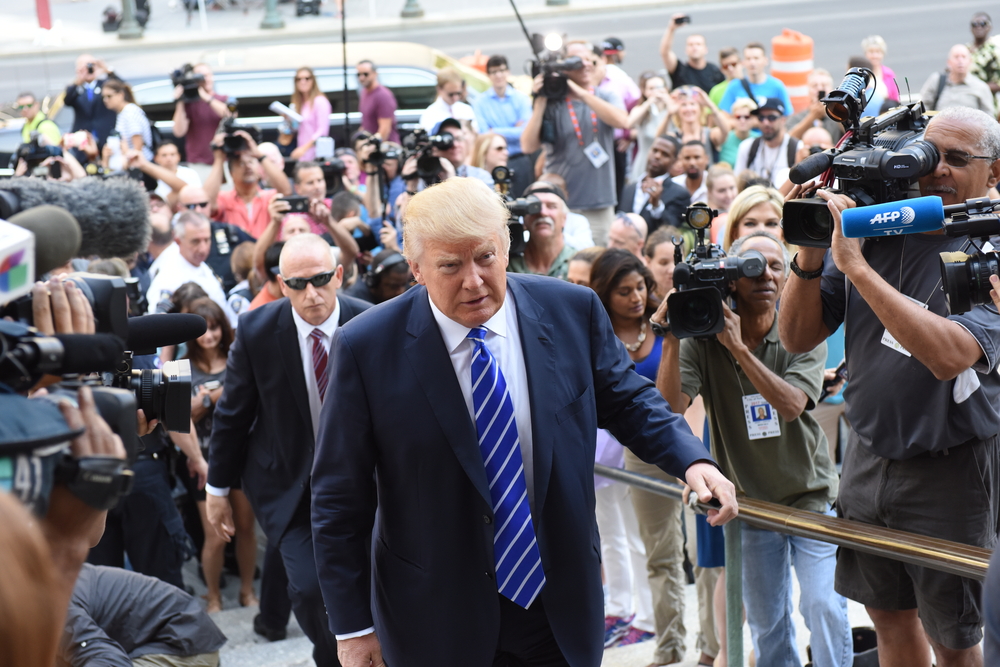President Trump signs an executive order to dismantle the Department of Education, fulfilling a longstanding Republican promise but facing significant legal and congressional challenges. The order aims to return education authority to the states, but full implementation requires congressional approval. Pell grants, Title I funding, and disability resources will be preserved and redistributed to other organizations. The department manages $1.6 trillion in student loans and had a budget of $268 billion last year.
In a decisive action that fulfills a decades-old Republican goal, President Donald Trump signed an executive order to dismantle the Department of Education. The order directs Education Secretary Linda McMahon to "take all necessary steps to facilitate the closure of the Department of Education and return authority over education to the States and local communities while ensuring the effective and uninterrupted delivery of services, programs, and benefits on which Americans rely."
Trump signs EO to end the Department of Education.
The states will control their education which gives much more power back to the parents.
We can finally get value add for our kids instead of indoctrination. pic.twitter.com/8ZRcVBX3Wj
— Brady (@HempMillionaire) March 20, 2025
During the signing ceremony, Trump addressed McMahon directly, saying, "Linda, you're going to be presiding over something that's so important." The President assured Americans that "useful functions" like Pell grants would remain active despite the department's closure. The White House justified the department's closure by citing its poor performance. The White House noted that despite spending over $3 trillion since its creation in 1979, student achievement has shown little improvement.
Trumps Sign EO eliminating Dept of Education on Live TV pic.twitter.com/6k0d1QvwsS
— Scott Hendricks – An Old Man with a Pen (@ConservativeAd5) March 20, 2025
While the executive order represents a significant policy statement, it cannot immediately eliminate the department, which was established by Congress during Jimmy Carter's administration. Complete dismantling requires congressional approval, which faces challenges even with Republican majorities. The administration plans to present Congress with proposals to eliminate the department "once and for all," though narrow Republican majorities may complicate this effort.
The department has already seen significant downsizing under Trump's leadership, with staffing reduced from 4,133 to 2,183 employees since he took office. Democrats, teachers unions, and progressive organizations are expected to file numerous lawsuits challenging the administration's actions, setting up potential constitutional battles over executive authority versus congressional prerogatives in determining federal agency structures.
Despite the push to eliminate the department, the administration has emphasized that key functions will continue. Federal Pell grants for college students, Title I funding for low-income schools, and resources for children with disabilities under the Individuals with Disabilities Education Act will be preserved and redistributed to other federal agencies. This transition plan aims to address concerns about disruptions to essential educational services.
"begin eliminating the federal Department of Education." – President Donald Trump
The department currently manages a massive $1.6 trillion student loan portfolio and distributes billions in funding for K-12 education nationwide. Preliminary plans suggest transferring these responsibilities to other federal agencies, including the Treasury and Labor departments. Some proposals include converting federal education funding into block grants with fewer conditions, potentially affecting federal civil rights protections in schools and giving states more flexibility in how they use educational funds.
The Trump administration argues that returning education to the states will improve educational quality, comparing the potential outcomes to successful educational systems in countries like Denmark, Norway, and Finland. Statistics cited by the White House note that only 33% of fourth-graders are proficient in reading and just 25% in math, with U.S. students ranking 25th internationally in science and 38th in math among developed nations.
This move represents the most serious threat to the department's existence since its creation. While former President Ronald Reagan had called for its elimination and Trump's first administration attempted to merge it with the Labor Department, this current effort demonstrates a more determined approach to fundamentally restructuring federal involvement in education. As the process unfolds, both legal challenges and legislative battles will determine whether this longstanding Republican goal finally becomes reality.

